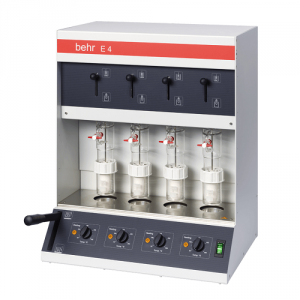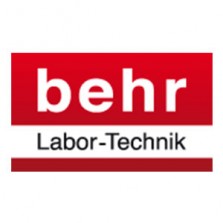Hot extraction according to Randall
To find out more details, please fill in the request form below.
Ask for more information
+40 21 255 31 32
Hot extraction according to Randall
The hot extraction process according to Randall consists of three steps: n Boiling n Rinsing n and evaporation.
Boiling
In the first step, the extraction thimble with the sample is located in the vessel with the boiling extraction agent - similar to a tea bag in a cup of hot water. Most of the substance to be extracted should dissolve in this step and is distributed in the solvent. The top part of the apparatus simply acts as a reflux condenser; the condensate drips into the extraction thimble and helps to dissolve the substance.
Rinsing
In the second step, the extraction thimble is lifted out of the pool. Extract may still adhere to the thimble; and some of the substance that has not yet dissolved may still be located in the sample. The condensate from the condenser flushes the remaining extract and progressively dissolves the previously undissolved portion. If the dissolved extract is to be subjected to further processing, the extraction is now complete. Otherwise, the solvent is removed in the third step.
Evaporation
Connect the recirculating tap to the condenser for evaporation. The condensate collects in the lower part of the condenser; it can be reused for the next extraction. Thanks to the the short path to the apparatus, the sample can be evaporated until it is almost dry. Benefits of the hot extraction process include n A compact apparatus with short process paths, n Low solvent requirement, n Short extraction period - typically about an hour. Due to the short extraction period, hot extraction is also gentle on the extract. There are now also an increasing number of analysis processes that use hot extraction.


